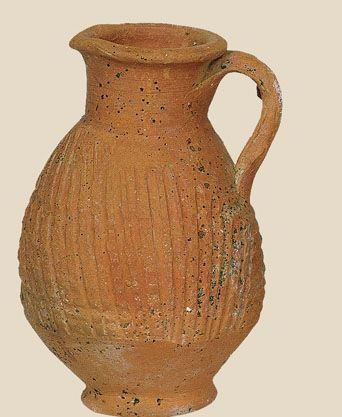Clay jug (00117)

Exhibition room: I.2 Secular life
Date: 6th c.
Dimensions (cm): 15 Χ 6,4
Provenance: Athens
Clay jug with handle. It has a ring base and an ovoid body. It has a tall, cylindrical neck
ending in a ring-shaped rim, with a strongly projecting lip and small spout. A reddish
brown slip covers all the inner and outer surfaces of the vessel. On the body we can
see "gouged" decoration, as it was called by the excavators of the Athens Agora, the
main feature of which is a series of slanting grooves.
It is an everyday household utensil, which was used as a grave gift in a tomb excavated
in the Vyronas area. It probably came from a provincial workshop which produced poor
quality pottery to meet the everyday needs of the local population. It is dated to the
Early Christian period, ca. 6th century.








